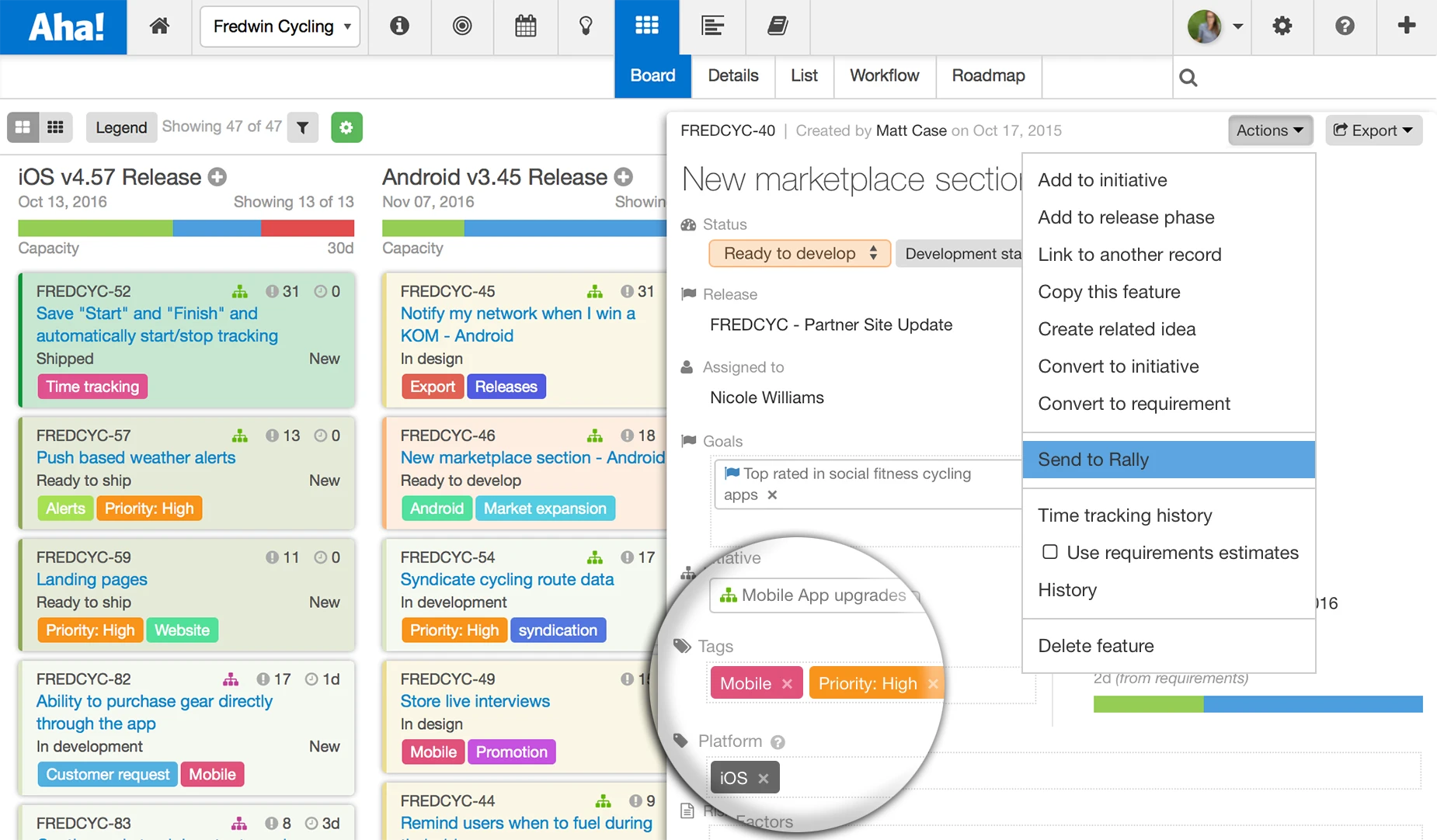
Just Launched! — Two-Way Rally Integration Now Supports Feature Tags
Update: We recently launched our most powerful Rally integration ever. Learn more about it here.
One of my favorite playground games was “tag.” I can remember the thrill of the madness. The joy of being the last one running. You missed me!
Tag, tag, tag. I still do a lot of it (but without the muddy knees) and so do you. Get this — you have tagged nearly one million records in Aha!
These tags are being used to identify feature priority, components, customers who requested the feature, and more. Tags are easy to use but play a big role in helping teams communicate and implement what customers need and want.
That is why our latest enhancement brings tag syncing between Aha! and Rally Software (which was acquired by CA Technologies). Our integration with Rally is one of our most widely used two-way integrations.
It was already possible to send your features and requirements from Aha! to Rally and to get status updates back from the engineering team when they made changes. Now, you can send feature details with tags from Aha! to Rally and vice versa. There is no longer a question as to whether key information has been shared between product and engineering teams.
Here is how it works.
Highlight important customers Tags are an easy and visual way to group and label features. One of the most common uses is to add a tag to indicate which customer requested a specific feature. So, let’s use that example. If you capture the customers who want specific functionality and send the tags to Rally, your engineering team will understand exactly who they are building the feature for.
The typeahead dropdown makes it easy to find and select an existing tag or to create a new one and add it the feature card.
Group features by priority Tags are extremely flexible and can be used to highlight important information that matters to your team. And what is more important to a product team than feature priority? You can even use tags to highlight those features that are most crucial.
Filter features by tag (in this example, filtered by “Priority: High” tags) for a custom feature board view. The same functionality can be used to create reports filtered by tags.
Send features and requirements to Rally When you are ready, it is easy to send your feature over to Rally. Simply select Send to Rally from the Actions menu in Aha! You can send features individually or in bulk. Requirements are sent to Rally together with the feature including name, description, attachments, and now tags.
Engineering teams using Rally will see the feature appear as a user story.
Send feature status and tags back to Aha! The existing integration already updates status in Aha! to keep everything in sync as changes are made in Rally. Now any updates made to tags in Rally are included in Aha! as well.
Changes in Rally are reflected in Aha! so the product team is always in sync with engineering.
Simple configuration When setting up the Rally integration, there is a new option in Settings to send tags. Selecting Send tags will enable tag syncing between Aha! and Rally. Navigate to Settings Product Integrations to configure tags. If you are adding to an existing Rally integration, there are a few additional steps to ensure Aha! and Rally are in sync before you enable the feature.
For existing integrations, note that selecting “Send tags” may result in tags being removed from user stories in Rally if those tags do not already exist in Aha! when “Send tags” is enabled.
Tags are one of the most flexible ways to visually organize your features and to easily highlight key details for your team. And now those key details can easily be shared more widely. This ensures product and engineering teams are always on the same page.
Tag, you are it.
Sign up for a free Aha! trial — be happy This feature is available to all Aha! customers. If you are not already an Aha! customer, you may want to sign up for a free 30 day trial of Aha! now to see why over 50,000 users trust Aha! to set product strategy, create visual roadmaps, and prioritize releases and features.





